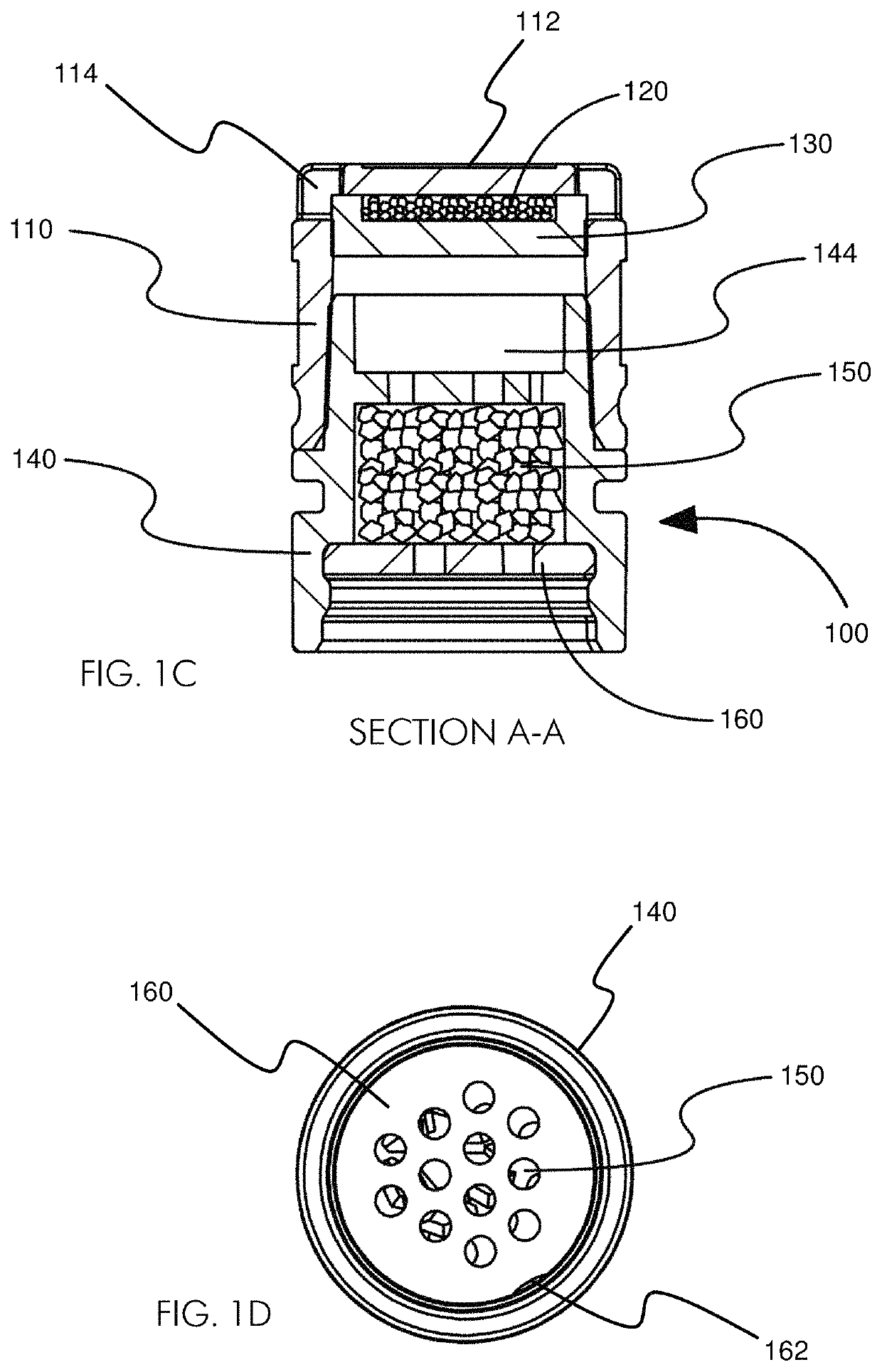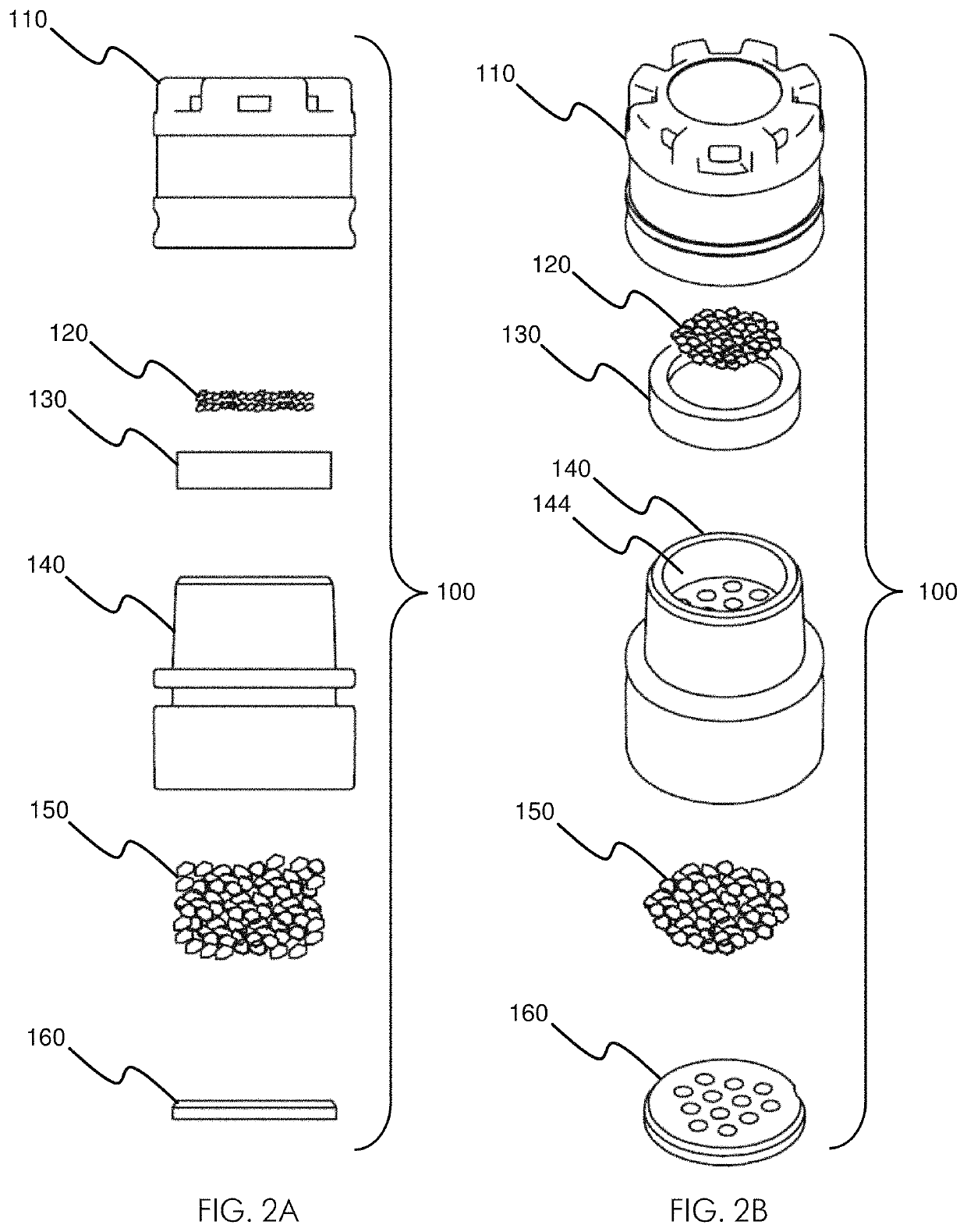Measuring an analyte in breath using a porous structure containing a reactant
a technology of reactant and analyte, which is applied in the direction of respiratory organ evaluation, diagnostic recording/measuring, instruments, etc., can solve the problems of introducing delay into the time required to obtain, adverse effects on patient compliance, and additional clinical tim
- Summary
- Abstract
- Description
- Claims
- Application Information
AI Technical Summary
Problems solved by technology
Method used
Image
Examples
Embodiment Construction
Sample Collection Cartridge
[0066]FIG. 1A illustrates an embodiment of a sample capture cartridge 100 that may be used to collect a fluid sample, e.g., to collect a fluid sample according to any of the number of methods disclosed herein. The sample capture cartridge 100, as shown in FIG. 1A, includes a cartridge lens cap 110 that has a number of lens cap vents 114 and fits on a cartridge desiccant canister 140, e.g., fits securely on the cartridge desiccant canister 140. The sample capture cartridge 100 may have a diameter of between about 5-30 mm, between about 5.5-28 mm, between about 6-26 mm, between about 6.5-24 mm, between about 7-22 mm, between about 7.5-20 mm, between about 8-18 mm, between about 8.5-16 mm, between about 9-14 mm, between about 9.5-12 mm, or any other diameter that advantageously facilitates use and collection of samples as disclosed herein. The sample capture cartridge 100 may have a combined height, including at least both the cartridge lens cap 110 and the c...
PUM
| Property | Measurement | Unit |
|---|---|---|
| diameter | aaaaa | aaaaa |
| diameter | aaaaa | aaaaa |
| diameter | aaaaa | aaaaa |
Abstract
Description
Claims
Application Information
 Login to view more
Login to view more - R&D Engineer
- R&D Manager
- IP Professional
- Industry Leading Data Capabilities
- Powerful AI technology
- Patent DNA Extraction
Browse by: Latest US Patents, China's latest patents, Technical Efficacy Thesaurus, Application Domain, Technology Topic.
© 2024 PatSnap. All rights reserved.Legal|Privacy policy|Modern Slavery Act Transparency Statement|Sitemap



